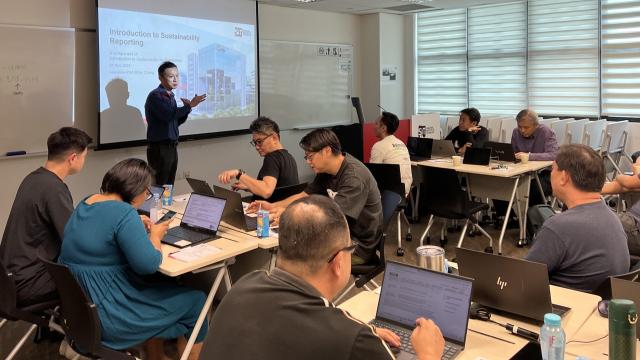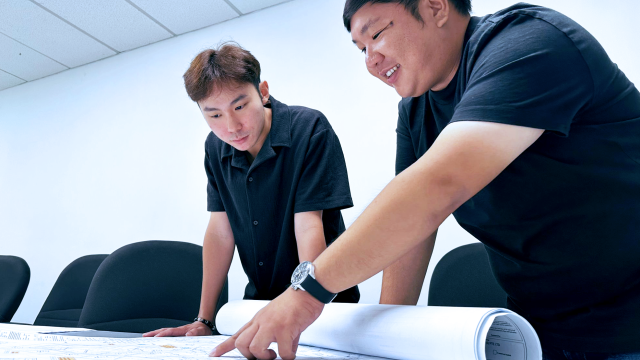At first glance, the plate of food looks like ordinary rice with chicken drumstick and broccoli. Take a closer look and you will realise that it is actually 3D printed food made of purees.
A team of Year 4 Food Technology students – Loh Hui Lin, Seah Xin Hui, Tan Kai Chin, Cassandra Toh and Vivian Chua Zi Xuan – conceived this idea as part of their final-year Product Development project, to address some issues that come along with Singapore’s ageing population.
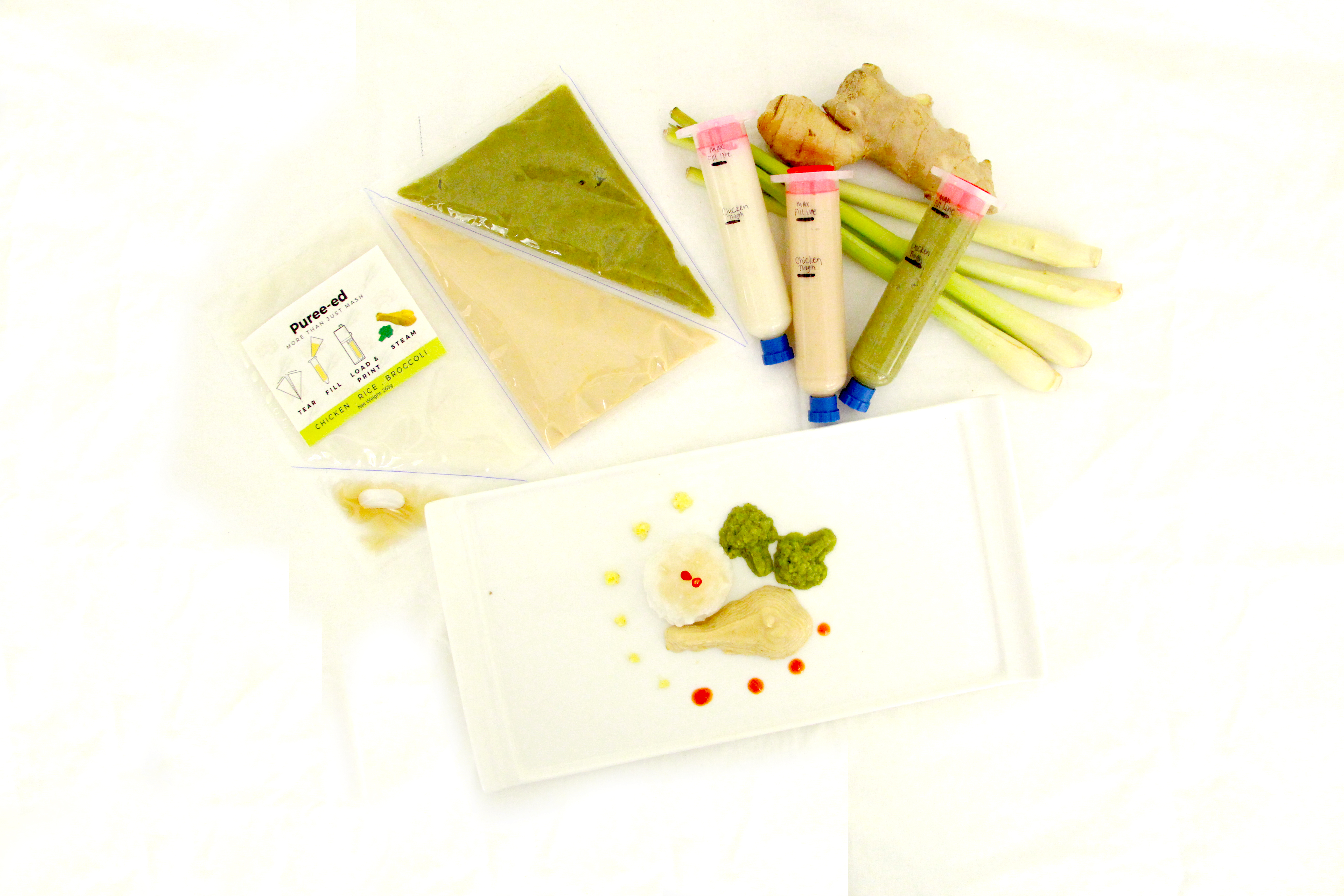
The students came up with the idea of pureed chicken rice meal which can be 3D printed, to improve the meal experience of senior citizens with chewing difficulties.
By 2030, a quarter of Singapore’s population will consist of elderly aged above 65. As one ages, one may face difficulties in chewing or swallowing and this could result in reduced food intake, lack in food variety and nutrients, as well as loss of bone and muscle mass in the elderly.
Ms Jolene Choo, Accredited Nutritionist, Fei Yue Retirees Centre said, “Currently, food prepared in hospitals and nursing homes are generally in the form of purees which is lumped together. We cannot see food such as broccoli in its shape, so it’s very difficult for the seniors to consume these food.”
Complete Food Product Design Process
To create food which is palatable, visually appetising and nutritious for the elderly, the SITizens came up with an idea to provide pureed meals that can be 3D printed. The project entails a comprehensive food product design process. It starts from surveying the needs of the elderly, their preference of food, and then developing the final product that not only looks good but tastes good as well. The students even designed the packaging themselves. The purees and condiment are stored in a single perforated packaging which can be used as a refillable piping bag for the 3D printer cartridges. This project was a collaboration with Food Innovation and Resource Centre (FIRC) at Singapore Polytechnic, who provided the 3D food printer to aid in our development process.
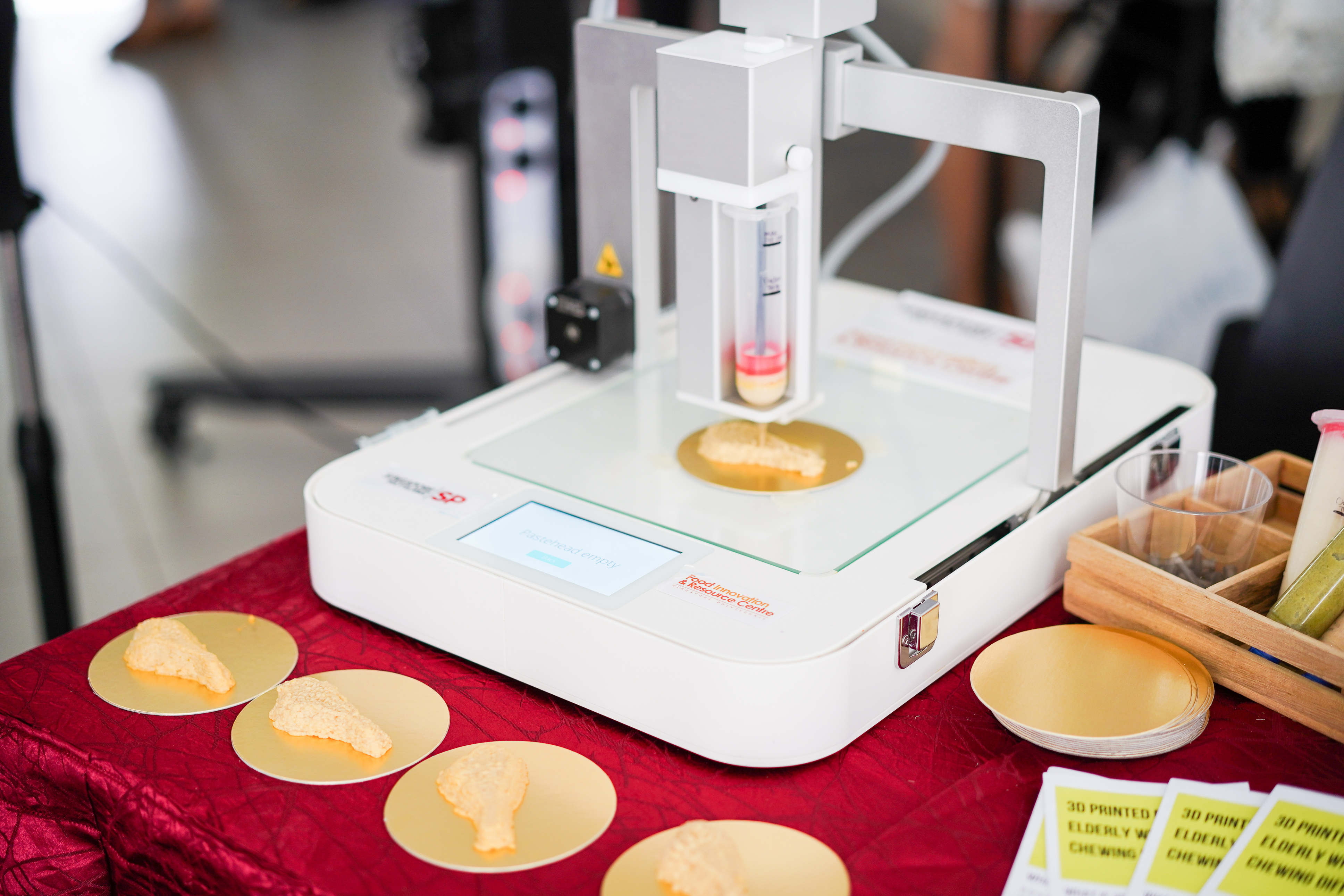
The 3D printer transforms the purees in the piping bag into chicken drumsticks!
“3D food printing is a way of food preparation by additive manufacturing, whereby pureed ingredients are filled into the printer cartridge, and extruded layer by layer to print out the chosen design using the 3D food printer,” explained Lim Wensheng, Lecturer, Massey University.
Assistant Professor Jorry Dharmawan, Chemical Engineering and Food Technology, SIT, added, “The food that exists in the form of purees today doesn't look very appetising. So the idea is to make something look good to eat by recreating the original form of the food. There is great potential in this emerging technology which enables us to improve the quality of lives of our seniors
“We started off by brainstorming product concept, generating designs to be printed, formulating our products, and conducting sensory testing with the elderly in Fei Yue Retirees Centre to understand their acceptability towards this new idea,” said Hui Lin.
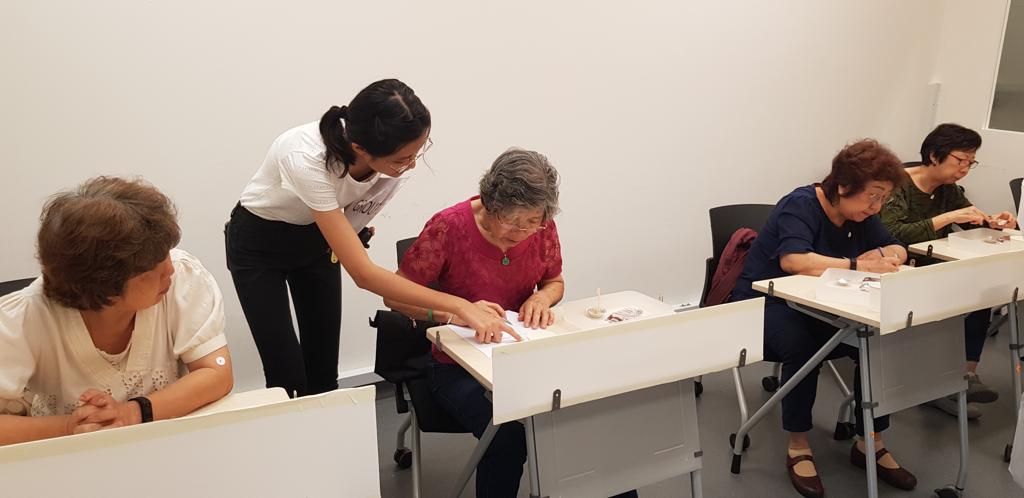
Sensory testing was conducted with the elderly in Fei Yue Retirees Centre to understand their acceptability towards this new idea.
“Eating fundamentally brings a lot of joy to people and it’s a pity when our elders cannot experience that when they have swallowing difficulties. While we are excited to have come up with an innovative solution, what really matters is that we are potentially improving the nutrition and the eating experience for our seniors. We are happy that our Asian chicken rice have received positive feedback,” added Hui Lin.
The team had its fair share of challenges in this project too. One challenge they faced was to achieve an optimal texture for the printed meals. The components within the meal need to be easily extruded, hold its shape well and have an acceptable texture for the consumers. To overcome this, the students used a combination of ingredient selection and processing parameters identified through countless trials and experimentations.
“As 3D food printing is a new concept to us, we have picked up new skills along the way, such as using design software to make the design more interesting and appealing,” remarked Xin Hui. “Our SIT education has enabled us to gain a wide perspective, from theoretical knowledge to application in real life scenarios. Besides understanding the science behind food, we also touched on food technology and food business, backed by laboratory sessions and problem-based learning. These practical skills will definitely help us prepare towards a career in the food industry, and enable us to contribute back to society.”
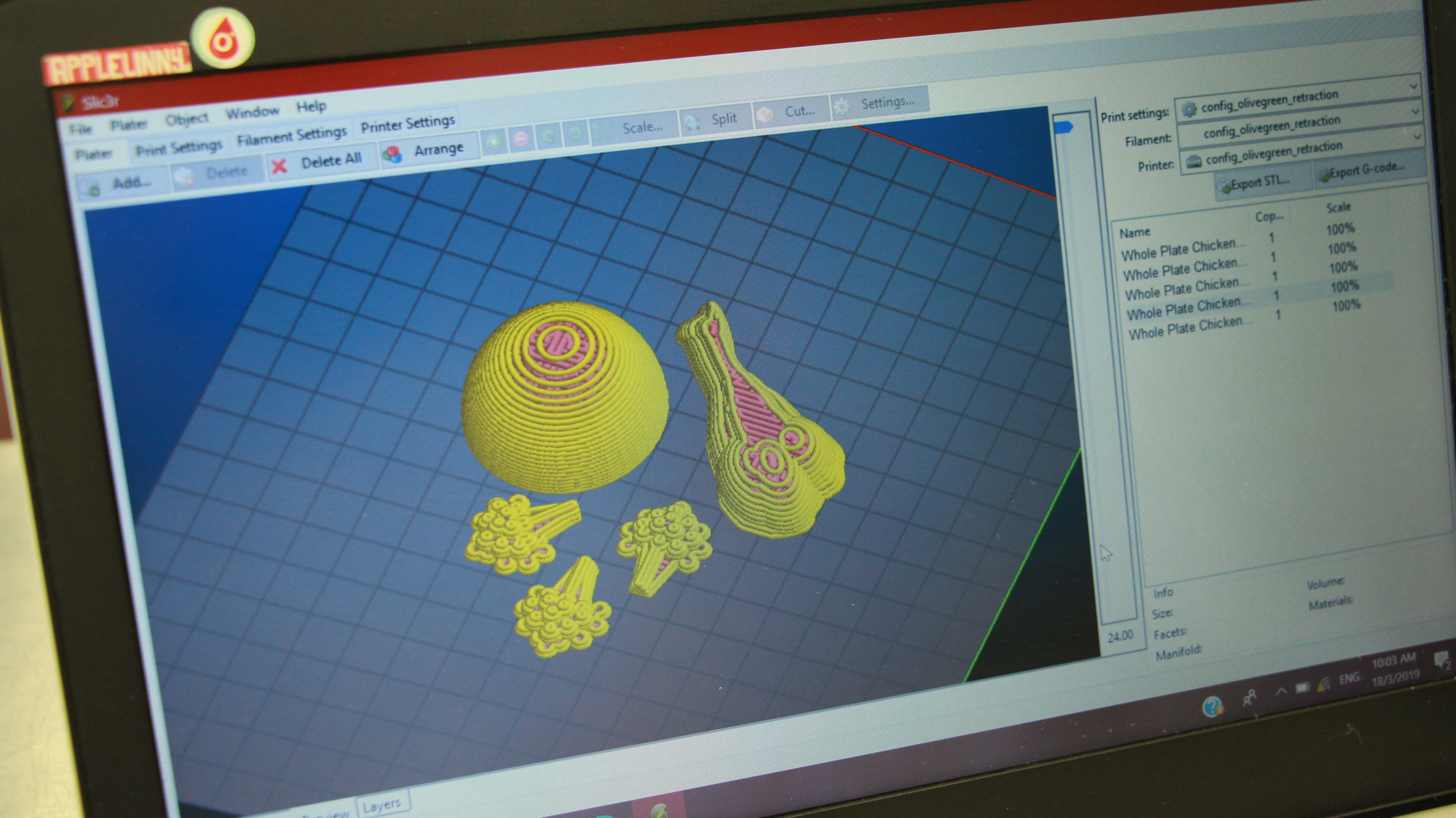
The students learned to use design software to enhance the visual appeal of their products.
Award Winning Innovation
3D printed chicken rice anyone? Our SITizens presented their ‘3D Food Printing for the Elderly’ project at the 13th Biomedical Engineering Society (BES) Scientific Meeting and clinched a merit award in the undergraduate category. They also won a Bronze in the Institution of Engineers Singapore (IES) Innovation Challenge for the Community, which aims to cultivate a spirit of community service in the youth.
Held on 18 May at SIT@Dover, the annual symposium provided a platform for tertiary students to interact and share ideas, as well as learn from professionals in the biomedical engineering industry. In total, SIT students clinched three awards in the BES Student Meeting Oral Presentation and two awards in the IES Innovation Challenge 2019.
Congratulations and well done, SITizens!

The SIT team clinched a Bronze in the IES Innovation Challenge for their innovation.

